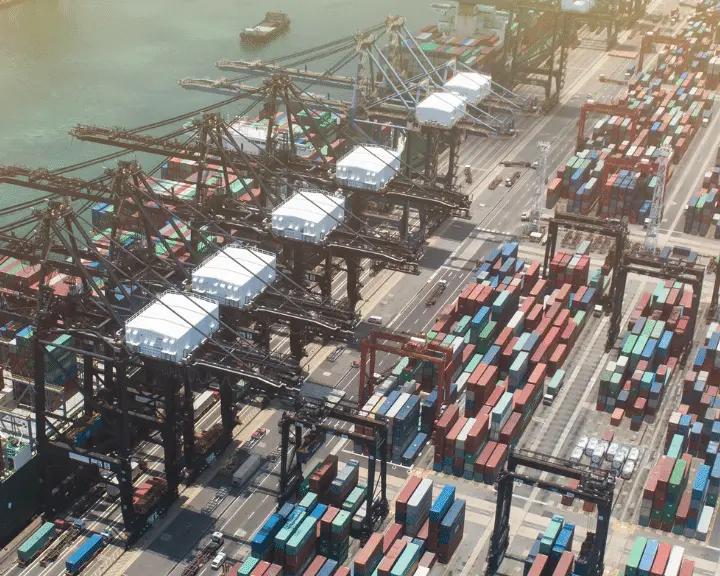Supply chain digitization prepares your company for resilient growth at any pace, and helps you seize opportunities to scale your business, whether you’re processing ten transactions a day or 10 million.
Managing your supply chain with manual tools and disconnected systems isn’t just inefficient anymore. It’s expensive, error-prone, and holding your team back.
Every file that lives on someone’s desktop. Every email that needs to be double-checked. Every spreadsheet that needs to be translated into another system. These aren’t just nuisances. They create real operational drag.
This is why supply chain automation software has become a non-negotiable for supply chain logistics teams and shippers seeking a supply chain automation solution. If you’re still relying on custom scripts, one-off integrations, or legacy platforms requiring manual intervention, your team wastes time on tasks that should already be solved.
In this guide, we’ll break down what supply chain automation software is, why it matters, and how to evaluate the right platform for your business. Whether you’re a freight forwarder juggling transportation management system (TMS) integrations or a shipper looking to clean up supplier communication, there’s a path to fix what’s slowing you down.
What is supply chain automation software?
At its core, supply chain automation software connects the tools you already use and automates the workflows that sit between them, enhancing automation in supply chain management.
That means tying together your TMS, enterprise resource planning (ERP), warehouse management system (WMS), customs and compliance platforms, rate management systems, visibility tools, and more.
Instead of hiring more people to move data between systems—or worse, making your current team spend time rekeying data—you can automate supply chain processes that waste hours every week.
A few real-world examples:
- A freight forwarder can eliminate manual entry by integrating their TMS with ocean carrier milestone feeds and accounting tools.
- A shipper can automatically push supplier status updates into their ERP instead of chasing vendors through email.
When done right, this automation reduces errors, improves visibility, and gives your team time to focus on higher-impact work.
Key benefits of supply chain data automation software
You can’t fix what you can’t see—and if your systems aren’t connected, you’re flying blind. Here’s how the right automation platform makes a difference: these supply chain automation benefits can drive your decision-making.
Eliminates manual workarounds
A surprising number of supply chain teams still depend on local spreadsheets and long email threads to manage their data. The problem?
These tools create friction by having:
- Files live in multiple versions
- Information has to be cleaned or reformatted
- One person on vacation can delay an entire workflow
This is where process automation pays off. You eliminate the patchwork and replace it with something reliable. Automation can reduce manual processing times in logistics-heavy operations.
Provides real-time data visibility
Without visibility, teams are forced to guess. If you’re planning production or trying to hit a customer delivery date, "close enough" doesn’t cut it.
When systems are connected:
- You know when raw materials will arrive and can plan accordingly
- Your customer service teams don’t need to chase updates from providers
- Your buyers can see what’s delayed before it hits the dock
Whether planning inbound shipments or trying to match supply with demand, inventory management is only as good as the data it relies on.
That kind of real-time data doesn’t just help internally—it reduces your service cost, strengthens customer relationships, and makes your supply chain operations more predictable.
Reduces integration complexity
A major blocker for automation isn’t the concept. It’s the lift.
Custom integrations are expensive, slow to build, and a drain on your IT team. Much of the work is already done with a platform that offers pre-built integrations.
The result:
- Projects that used to take six to twelve months get finished in weeks
- You’re testing instead of building from scratch
- The platform handles maintenance, not your developers
You don’t need to reinvent the wheel to get your systems talking.
Improves compliance and reporting
Supply chains are under more pressure than ever to meet changing trade regulations, and being aware of supply chain technology trends can keep you ahead of compliance challenges. But compliance only works if the data is timely and accurate.
Automation helps by:
- Syncing trade risk tools with your ERP to surface exposure before decisions are made
- Automatically generating and sharing customs documents like commercial invoices
- Streamlining carbon emissions tracking and ESG reporting
By automating trade documentation and surfacing risk early, companies can maintain an efficient supply chain while staying compliant.
Enhances scalability
Manual processes don’t scale. As your business grows, it becomes more challenging to keep things running the same way.
If you plan to onboard new customers, expand to new regions, or add new modes, you need a system that can scale with you.
Automated supply chain systems allow you to do that without reworking your entire stack every year. Modernizing supply chain systems is also key to supporting long-term economic growth and workforce development.
What to look for in supply chain automation software
There’s no shortage of tools promising automation. However, not every platform is built to meet the complexity of the supply chain.
In fact, Gartner’s 2023 survey found that 87% of supply chain professionals plan to increase their tech investment, with automation and integration capabilities ranking as top priorities.
Here’s what to look for to maintain a competitive edge.
Integration-first approach
Your TMS, ERP, and WMS aren’t going anywhere. Any platform you choose needs to connect with those tools out of the box—or at least provide an easy way to bridge the gap.
For legacy systems, this becomes even more important. If you're on an older ERP, the right automation platform can extend its usefulness without needing a total re-platform.
The goal here is continuity. Keep the tools that are working and build bridges to the ones that aren’t.
Industry-specific expertise
Supply chain data is messy. It comes in different formats, follows inconsistent logic, and doesn’t always play nicely between partners.
Generic platforms don’t account for these challenges. That’s why industry expertise matters.
The right vendor should:
- Understand what the data means, not just where to move it
- Know the difference between a milestone and a manifest
- Anticipate where misalignments will happen before they do
This isn’t just about building integrations. It’s about solving business problems that are specific to logistics.
Data accuracy and standardization
Automation doesn’t help if the inputs are garbage.
Good automation software validates, maps, and cleans your data to be trusted by every system it touches. This foundation also sets you up to use AI and predictive tools down the line.
As Brian Glick, CEO of Chain.io, says, “We’re the gasoline in the AI engine.”
You can’t build AI on bad data. Automation ensures your inputs are clean, consistent, and usable.
Pre-built connections
Speed matters. You're losing time and budget if you're waiting on long integration timelines.
Platforms with pre-built connectors skip much of the discovery and development phase.
That means:
- Faster time to value
- Less dependence on internal teams
- More predictability in deployment
Reusable integrations also reduce the support burden over time. When you make a change, you don’t update dozens of custom scripts.
Flexibility and scalability
As your business changes, your systems need to keep up. Look for a platform that adapts to new partners, regions, and evolving compliance requirements.
Data governance matters here, too. You should control what’s being shared, where it’s going, and how it’s protected—especially if you're moving customer data across international borders.
How to choose the right solution for your business
Every company has different needs. Here’s how to think about the right fit depending on your role.
For freight forwarders
Your world runs on TMS connections.
Automation should make it easier to:
- Manage bookings
- Handle multi-carrier and multi-currency transactions
- Reconcile payments with accounting systems
You also need flexibility to support both enterprise customers and small shippers, without creating two sets of processes.
For shippers
You need visibility, not just on your logistics partners, but across your supplier network.
The right platform should help you:
- Sync with vendor updates
- Connect internal tools with external carriers
- Manage trade documentation across your sourcing regions
If a best-of-breed solution works for one part of your stack, look for integration tools to close the gaps rather than forcing a rip-and-replace.
For IT and operations teams
Avoid platforms that create more work for you. You don’t want another system to maintain.
Instead, focus on software that offers:
- Fast, repeatable integrations
- Self-service troubleshooting tools
- Logs and monitoring that don’t require custom coding
IT leaders and supply chain managers alike want tools that reduce headaches—not create more support tickets.
How Chain.io simplifies supply chain automation
Plenty of platforms say they do integration. But Chain.io is built specifically for supply chains.
Here’s what sets it apart:
- Built by logistics experts who understand the data behind your workflows
- Pre-built connectors with hundreds of systems, reducing development time
- Automated data mapping and workflow configuration, no custom code required
- Support for both LSPs and shippers, with tools tailored to each group
If you're trying to eliminate manual work, connect your existing tools, and create a foundation for growth, Chain.io makes that possible with our supply chain automation solution.
Take control of your supply chain with the right automation solution
Disconnected systems and manual workarounds aren’t just annoying; they hurt your business. The right supply chain automation software doesn’t just reduce effort. It creates clarity, improves service, and sets you up for long-term scalability.
If your team is stuck chasing files, fixing bad data, or waiting on months-long integrations, it’s time for a better way.
Chain.io gives you a way to get clean data where it needs to go—faster, with less friction, and with a team that understands the work behind the workflow.
If you’ve made it this far, consider this your working supply chain automation guide—practical, technical, and grounded in real experience.
Chain.io moves the data that powers your supply chain execution, no matter which systems you use.
With better data flow and cleaner integrations, you gain more than efficiency—you improve your overall supply chain performance.
Or go one step further and book a time with our team. We’ll show you how to make supply chain automation feel less like a project—and more like progress.







